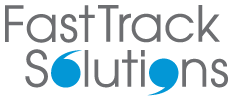B2B appointment setting plays a crucial role in driving business growth and establishing meaningful connections with potential clients. It serves as the gateway to initiating the sales process and is an essential step in converting prospects into valuable customers. In this guide, we’ll explore the significance of B2B appointment setting, its key benefits, techniques, and best practices to empower your business with successful lead generation and sales prospecting.
What is B2B Appointment Setting?
B2B appointment setting is the process of scheduling meetings or calls between a sales representative and potential business clients. It is a key component of the sales cycle that focuses on nurturing leads, building relationships, and ultimately, closing deals. This proactive approach allows companies to reach out to their target audience and engage with them directly, ensuring a personalised and tailored sales experience.
Driving Business Growth with B2B Appointment Setting
By setting appointments with qualified prospects, businesses can streamline their sales efforts and focus on engaging with individuals who are genuinely interested in their products or services. This results in more efficient lead generation, increased sales opportunities, and a higher likelihood of converting leads into satisfied customers.
The Role of B2B Appointment Setting in the Sales Process
B2B appointment setting serves as the initial touchpoint in the sales process. It enables sales representatives to introduce themselves, understand the prospect’s needs, and showcase how their offerings can address those needs effectively. Moreover, it helps in building trust and credibility by establishing a direct line of communication with potential clients.
B2B Appointment Setting Techniques and Tips
There are some key things you need to do at the very beginning of the appointment setting process – before you even begin to think about booking the meeting! From reviewing your target audience and your existing dataset, through to writing messaging with your target audience and their priorities and challenges in mind. Let’s go through what you need to do.
Reviewing your Audience and Dataset
Reviewing your audience and dataset is a critical first step before starting any B2B appointment setting. Understanding your target audience is fundamental to tailoring your outreach effectively. Conduct thorough research to identify the demographics, needs, and pain points of your ideal B2B prospects.
Additionally, evaluating your existing dataset is crucial to ensure its adequacy for your appointment-setting efforts. The quality of your telemarketing data plays a significant role in the success of your campaign. It is essential to acquire good-quality telemarketing data from reliable sources. A comprehensive dataset will empower you with accurate information, enabling you to target the right prospects and maximise the effectiveness of your appointment-setting strategies.
Building a Targeted Prospect List
Identifying your ideal B2B prospects is crucial for a successful appointment-setting campaign. Leverage data analytics to research and understand your target market thoroughly. Utilise market segmentation techniques to categorise prospects based on specific criteria, such as industry, company size, or location, allowing you to tailor your outreach efforts more effectively.
Crafting Compelling Outreach Messages
To grab the attention of your prospects, focus on creating attention-grabbing subject lines for your emails or cold calling scripts. Personalise your outreach by addressing prospects by their names and demonstrating an understanding of their unique challenges. Incorporate value propositions in your messages to highlight how your offerings can benefit their business.
Effective Cold Calling Strategies
Before making cold calls, invest time in researching your prospects. Understand their business, pain points, and potential needs. Craft your approach to focus on exploring the priorities and needs of the prospect, not just talking about your offering. Be prepared to handle objections and rejections gracefully, maintaining a positive and professional demeanour throughout the call.
Leveraging Email and Social Media Channels
Craft engaging email templates for your B2B outreach, ensuring they are personalised and relevant to the recipient. Additionally, harness the power of social media platforms where possible to reach a broader audience. Integrating email and social media strategies can amplify your outreach efforts, increasing the chances of securing valuable appointments.
Determine Qualification Criteria and Goals
Defining your business development objectives plays a vital role in accurately assessing the effectiveness of your appointment setting efforts. Although the amount of appointments serves as a valuable metric, it should not be the sole measure for gauging success; by establishing clear revenue objectives, your team can shift their focus from sheer quantity to achieving high-quality outcomes.
Establishing an agreed-upon qualification criteria can significantly enhance your efficiency. Understanding what a promising opportunity for your business is empowers your team to swiftly and effectively evaluate whether engaging with a target account is a worthwhile investment of your resources. This strategic approach ensures that your efforts are concentrated on prospects that align with your objectives, optimising your chances of success.
Effective Barrier-Handling Strategies
Before making cold calls, invest time in preparing to handle barriers ahead of setting up appointments. Understand what may get in the way of prospects agreeing to a meeting and be prepared to handle objections and rejections gracefully, ensure you can highlight “what’s in it for them” to meet with you.
Best Practices for B2B Appointment Setting

Establishing Credibility and Trust
Building credibility and trust is vital when engaging with potential clients both over the phone and via email. To establish credibility over the phone, focus on active listening and demonstrating genuine interest in the prospect’s needs. Be prepared to answer their questions and provide valuable insights, showcasing your expertise and understanding of their unique challenges. Maintain a professional and polite tone throughout the conversation to create a positive impression.
Similarly, when communicating via email, create personalised messages that address the prospect’s specific pain points and challenges. Incorporate customer testimonials and case studies in your emails to showcase the positive impact your offerings have had on other businesses. Share success stories that highlight real results achieved with your products or services. By providing evidence of your previous successful engagements, you can build credibility and trust with potential clients, increasing their confidence in your abilities to meet their needs effectively. Remember to be prompt in responding to email inquiries and provide valuable and relevant information that demonstrates your expertise.
Building a professional online presence is also important – you can do this by optimising your website and social media profiles. Showcase customer testimonials and case studies to demonstrate the positive impact your offerings have had on other businesses; highlighting your industry expertise further establishes credibility and trust with potential clients.
Implementing Efficient Appointment Setting Processes
Accurate and detailed documentation is essential throughout the appointment setting process. Update your CRM with call history details to track interactions with prospects effectively. Also, ensure that your CRM reflects the next steps in the process, enabling a seamless handover of information to sales representatives.
Tracking and Analysing Performance Metrics
Key performance metrics, such as conversion rates, response rates, and the sales revenue generated from appointments, are critical to measure the success of your B2B appointment-setting efforts. Whilst the number of appointments is a useful KPI, it should not be the sole focus.
Instead, prioritise metrics that directly impact your business’s bottom line, such as the revenue generated from successful appointments and the number of appointments leading to sales wins. Implementing tracking systems and analytics will allow you to gather relevant data and gain valuable insights into your campaigns. By analysing this data, you prioritise quality over quantity, can set realistic targets, and continuously refine your strategies to achieve better results and optimise your B2B appointment setting process for improved sales outcomes.
B2B appointment setting is a fundamental aspect of the sales process that drives business growth and establishes valuable connections with potential clients. By adopting targeted techniques and best practices, you can enhance your lead generation and sales prospecting efforts significantly.
Final Tips for Successful Lead Generation and Sales Prospecting
Remember to continually refine your prospect list and outreach messages based on data-driven insights. Stay up-to-date with the latest trends and developments in B2B appointment setting to maintain a competitive edge. Lastly, prioritise building strong and lasting relationships with prospects, as this fosters loyalty and increases the likelihood of repeat business.
Fast Track Your Success with Effective B2B Appointment Setting
Embrace B2B appointment setting as a strategic tool to optimise your sales process and achieve your business objectives. By employing targeted techniques and implementing best practices, you can unlock new opportunities and cultivate prosperous business relationships.
For expert guidance and solutions for B2B appointment setting, get in touch. We specialise in empowering businesses with effective strategies to accelerate your sales performance.





